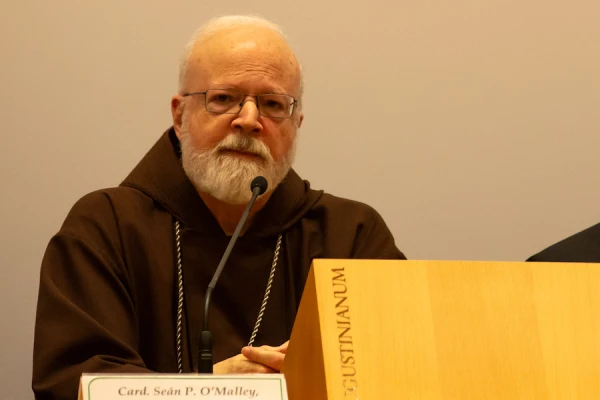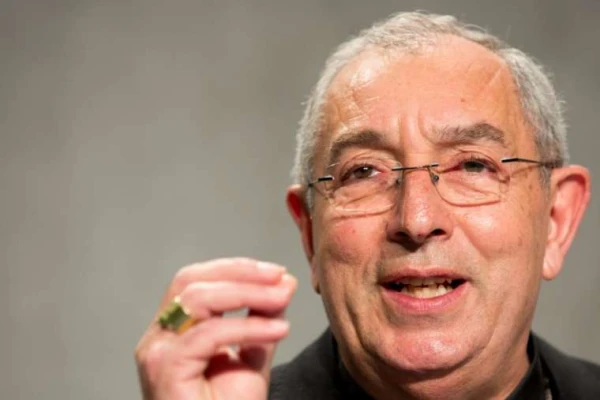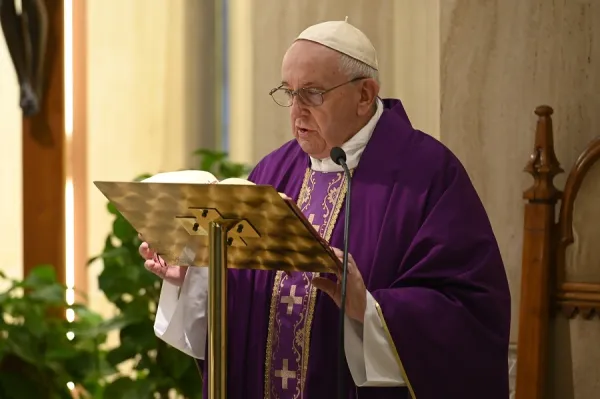
Vatican City, Feb 22, 2019 / 04:00 pm (CNA).- Cardinals and clergy participating in the Vatican’s sex abuse summit expressed conflicting views on the use of the term “zero tolerance” Friday, with some claiming that “zero tolerance” is an American concept with a legalistic focus.
Cardinal Sean O’Malley of Boston, one of the pope’s primary advisors on sexual abuse, said he knows that “there is a lot of resistance to using the terminology” of zero-tolerance at the summit because some believe it sounds “secular.” But, the cardinal insisted that the principle was “clearly articulated” by Pope St. John Paul II.
“There is no place in ministry for someone who harms a child and that has to be a line in the sand. That is something that is so important for all of us,” O’Malley said at a Vatican press conference Feb. 22.
Father Federico Lombardi, acting moderator at the Vatican sex abuse summit, told the press he does not use the term “zero tolerance” when he writes about the protection of minors because its definition is limited compared to what Vatican meeting has set out to accomplish.
“‘Zero tolerance’ … clearly refers to a very limited aspect of the problem we are confronting because the entire dimension of the pastoral care for victims, accompaniment, the selection of members of the clergy, prevention in parishes and in our activities, the definition of zero tolerance does not cover these aspects. It refers to one way of punitive action against criminals,” Lombardi said.
“This is very important fundamental part, but it is one part of the entire area of the protection of minors, which I think is much broader than ‘zero tolerance,’” he continued.
Archbishop Charles Scicluna of Malta supported the notion of “zero tolerance,” saying that “we cannot allow anyone in ministry” who might harm the young, but stated that “the prudential approach is not primarily a criminal approach — I’m not going to remove someone from ministry to punish them, but to protect the flock.”
Scicluna added that “those who don’t like the notion of ‘zero tolerance’ … don’t know what this means.”
“This is a principle already stated very clearly by John Paul II in his 23 April 2002 and this is what is to fuel every decision from the prudential and pastoral standpoint. It has a fundamental principle if the person is removed to spend a life of prayer and repentance,” he said.
O’Malley explained that in the United States’ Dallas Charter for the Protection of Minors “the commitment was no one could continue in ministry after having harmed a child,” and that he would “advocate for that everywhere.”
Others focused on “zero tolerance” as “an American and Canadian” concept. Lombardi said at the press conference, “As Cardinal O’Malley says, to the Americans, the Canadians, it means something very specific. Anybody who has committed a serious offence they cannot remain in ministry, well I agree, but when I talk about protection of minors, I am talking about a lot of other things as well.”
While O’Malley advanced the idea of an application of the American model of protection of minors elsewhere, Cupich warned against becoming “imperialists” from “the United States or from the Western world” in dealing with different areas of the world that do “not have the experience of talking about these very intimate personal issues in a public way.”
In response to a question about the difficulty of cultural diversity in the meeting of the world’s bishops, Cupich added that “this is what synodality is about — it is walking together with each other, but also maybe learning from their experience and their own culture that there are some things that we could improve on given the richness of their own culture.”
The second day of the the Vatican abuse summit focused on the theme of “accountability,” which included discussion of “zero tolerance.”
Sex abuse victims on the sidelines of the Vatican summit have been calling for “zero tolerance” for sex abuse for both abuses and bishops who cover-up abuse. Some survivors’ organizations, such as Ending Clergy Abuse, specified that for them “zero-tolerance” meant “laicization” for such bishops and abuser priests.
O’Malley explained that within current U.S. protocols, the specific promise of “zero tolerance” is that abuser priests will be removed from ministry in all cases.
“The conclusion wasn’t automatically that they would be laicized…and that if they were elderly or sickly that they would have prayer or penance. And some religious communities thought it was better to maintain that person within the community to be able to monitor them for the safety of children,” O’Malley said.
O’Malley also said that he has been told that the Holy See’s investigation on the American church’s handling of abuser Theodore McCarrick will be released “in the not too distant future.”
Scicluna also expressed a desire to someday release statistics from the Congregation for the Doctrine of Faith on clerical abuse, and said that he had already spoken with Cardinal Luis Ladaria about the matter.
O’Malley clarified that the 21 reflection points given out to bishops on the first day of the summit were a compilation of points submitted by the bishops. “It wasn’t coming from [Pope Francis] himself.
On day two of the submit, Pope Francis circulated the United Nations’ document on the rights of a child among the presidents of bishops conferences gathered for the meeting.
Cardinal O’Malley said “there is a moral obligation to share this information with the civil authorities for the safety of children. I think that the terrible crisis that we have experienced in the USA is precisely because for so long these crimes were not being reported so reporting to me is a big part of the way forward and for the protection of children.”
If you value the news and views Catholic World Report provides, please consider donating to support our efforts. Your contribution will help us continue to make CWR available to all readers worldwide for free, without a subscription. Thank you for your generosity!
Click here for more information on donating to CWR. Click here to sign up for our newsletter.





Leave a Reply